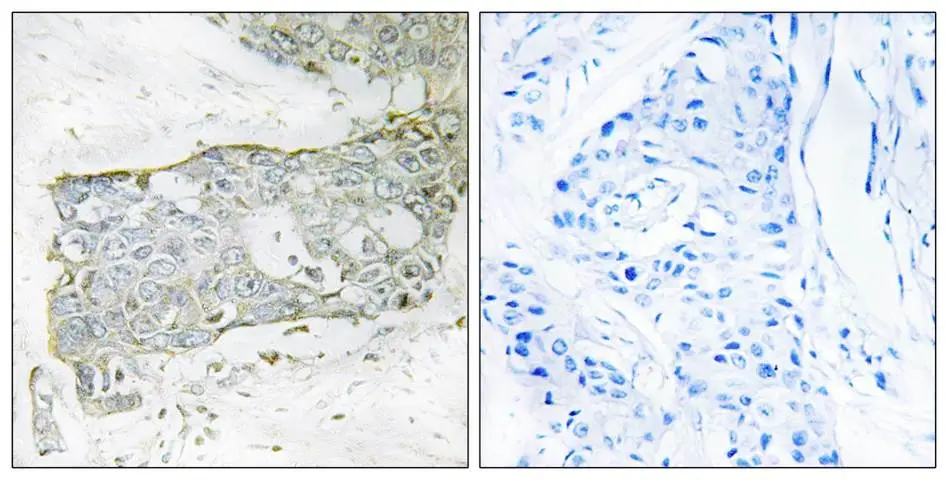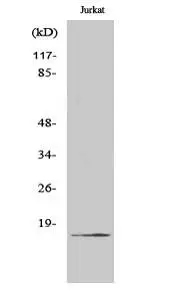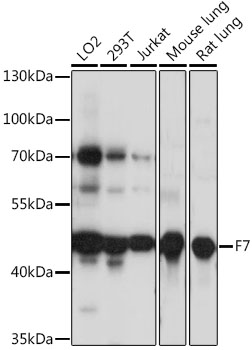
IHC-P analysis of human breast carcinoma tissue using GTX86939 Factor VII (cleaved Arg212) antibody. The picture on the right is blocked with the synthesized peptide.
Factor VII (cleaved Arg212) antibody
GTX86939
ApplicationsWestern Blot, ImmunoHistoChemistry, ImmunoHistoChemistry Paraffin
Product group Antibodies
TargetF7
Overview
- SupplierGeneTex
- Product NameFactor VII (cleaved Arg212) antibody
- Delivery Days Customer9
- Application Supplier NoteWB: 1:500~1:1000. IHC-P: 1:50~1:100. *Optimal dilutions/concentrations should be determined by the researcher.Not tested in other applications.
- ApplicationsWestern Blot, ImmunoHistoChemistry, ImmunoHistoChemistry Paraffin
- CertificationResearch Use Only
- ClonalityPolyclonal
- ConjugateUnconjugated
- Gene ID2155
- Target nameF7
- Target descriptioncoagulation factor VII
- Target synonymsSPCA, coagulation factor VII, FVII coagulation protein, coagulation factor VII (serum prothrombin conversion accelerator), eptacog alfa, proconvertin
- HostRabbit
- IsotypeIgG
- Protein IDP08709
- Protein NameCoagulation factor VII
- Scientific DescriptionThis gene encodes coagulation factor VII which is a vitamin K-dependent factor essential for hemostasis. This factor circulates in the blood in a zymogen form, and is converted to an active form by either factor IXa, factor Xa, factor XIIa, or thrombin by minor proteolysis. Upon activation of the factor VII, a heavy chain containing a catalytic domain and a light chain containing 2 EGF-like domains are generated, and two chains are held together by a disulfide bond. In the presence of factor III and calcium ions, the activated factor then further activates the coagulation cascade by converting factor IX to factor IXa and/or factor X to factor Xa. Defects in this gene can cause coagulopathy. Alternative splicing results in multiple transcript variants encoding different isoforms that may undergo similar proteolytic processing to generate mature polypeptides. [provided by RefSeq, Aug 2015]
- Storage Instruction-20°C or -80°C,2°C to 8°C
- UNSPSC12352203



